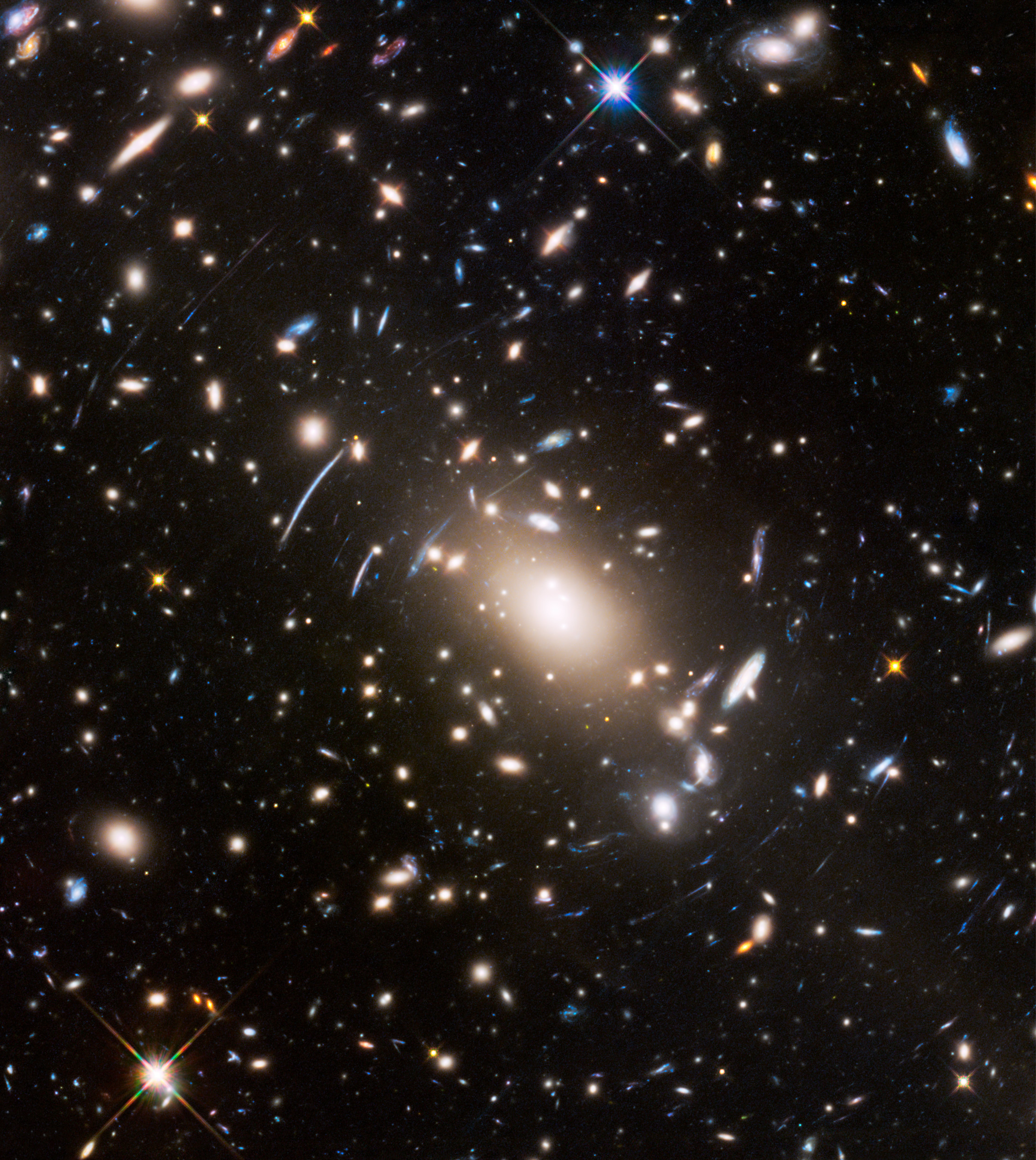Move Over, 'Star Trek' — Hubble Telescope Sees the Real Final Frontier
When "Star Trek's" starship Enterprise first embarked on a "five-year mission" in 1966, the goal of its first crew was to better understand the universe around it by going where no men —or humans, as we would say today —had gone before.
That mission is similar to that of the Hubble Space Telescope, which has been exploring the universe from Earth orbit since 1990. And just as "Star Trek Beyond" (the science-fiction franchise's latest film) warps into theaters this Friday, scientists have unveiled their newest view yet from their real-life "Frontier Fields" program, which you can see here in a stunning video.

"The newest target of Hubble's mission is the distant galaxy cluster Abell S1063, potentially home to billions of strange new worlds," just like those visited by the USS Enterprise, according to a European Space Agency description. The cluster's massive gravity magnifies light from background galaxies due to an effect known as gravitational lensing.
Although Abell S1063 is 4 billion years old, the galaxies behind it are much older. One of the galaxies is about 12.7 billion years old, or only 1 billion years younger than the universe's formation during the Big Bang.
"[Gravitational lensing] allows Hubble to see galaxies that would otherwise be too faint to observe and makes it possible to search for, and study, the very first generation of galaxies in the universe," ESA officials wrote in the same statement. "'Fascinating,' as a famous Vulcan might say."
Hubble astronomers also observed 16 background galaxies whose light is so distorted that they form multiple images on the sky. This phenomenon will let astronomers improve models of mass in the cluster, both in ordinary matter and dark matter. Dark matter is a substance that cannot be seen with telescopes but that can be inferred through its gravitational influence. Along with dark energy, it makes up the vast majority of the known universe.
Previous Frontier Fields discoveries by Hubble include finding a galaxy that formed only a few hundred million years after the Big Bang, and the first gravitationally lensed supernova. Two more Frontier Fields observations are also planned in the next few years. ESA said this would not have been possible without its international collaboration across Europe and with NASA.
Sign up for the Live Science daily newsletter now
Get the world’s most fascinating discoveries delivered straight to your inbox.
"Such an extensive international collaboration would have made Gene Roddenberry, the father of 'Star Trek,' proud," ESA officials wrote.
Follow Elizabeth Howell @howellspace, or Space.com @Spacedotcom. We're also on Facebook and Google+. Original article on Space.com.

Elizabeth Howell was staff reporter at Space.com between 2022 and 2024 and a regular contributor to Live Science and Space.com between 2012 and 2022. Elizabeth's reporting includes multiple exclusives with the White House, speaking several times with the International Space Station, witnessing five human spaceflight launches on two continents, flying parabolic, working inside a spacesuit, and participating in a simulated Mars mission. Her latest book, "Why Am I Taller?" (ECW Press, 2022) is co-written with astronaut Dave Williams.










